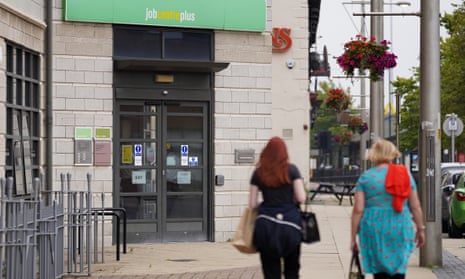Working women are facing a significant risk in the labour market, with far greater numbers being made redundant as a result of the pandemic than during the 2007 financial crisis, according to analysis seen by the Guardian.
Women are experiencing much higher levels of redundancies during the Covid pandemic than in previous recessions, according to the Trades Union Congress. Female redundancies in the UK hit 178,000 between September and November 2020, according to its analysis – 76% higher than the peak reached during the height of the financial crisis when female redundancy levels hit 100,000.
In the same 2020 period 217,000 men were made redundant – 3% more than the peak of male redundancies during the financial crisis.
“Women are more likely to be on furlough than men and to work in sectors hit hardest by Covid, like retail and hospitality. And they bore the brunt of childcare while schools and nurseries were closed,” said Frances O’Grady, the general secretary of the TUC. “Without ongoing support from ministers, many more women face losing their jobs.”
Experts say the jobs market looks particularly fragile for women, who often dominate the industries hardest hit by Covid. According to the TUC’s jobs monitor “there is a significant risk to women’s employment going forwards”. From the 12 months from December 2019 women accounted for six in 10 job losses in hospitality, six in 10 job losses in wholesale and retail and almost 60% of job losses in other services including hairdressers, beauty and care services.
Soph Hudson was made redundant from her role as an assistant manager for a cafe and conference centre. Without an income, she focused on increasing the success of her “side hustle”: making gender-free children’s clothing into a fully fledged business. “I felt I had no other choice as we were still in the midst of the pandemic and I saw no increase in the jobs in that sector,” she said.
While the number of female redundancies has slowed down since November last year, numbers remain at “crisis levels”, said the TUC. According to the latest official figures there were close to 94,000 female redundancies between December and February of 2021 – close to levels seen at the peak of the financial crash.
Economists said another wave of female redundancies was likely when the current furlough scheme ends in September, as women are more likely to have been furloughed than men. According to research from the Women’s Budget Group, 52.1% of women have been furloughed despite women only making up 47.3% of the overall UK workforce. By the end of February 2021, 2,337,900 women were furloughed compared with 2,144,700 men.
“Unfortunately, things are likely to get worse before they get better,” said Felicia Willow, the chief executive of the Fawcett Society. “When the furlough scheme ends, we expect to see employers in hospitality, retail, and other customer service industries lay off large numbers of employees. Because of the clustering of women in these sectors, we fear that redundancy rates of women will increase significantly.”
Mary-Ann Stephenson, the director of the Women’s Budget Group said the government plans to ‘build back better’ focus largely on construction projects, but WBG research showed that investment in care could create nearly three times as many jobs as similar investment in construction. “A care-led recovery would create more jobs for men, and many more for women, who are at greater risk of redundancy,” she said.
